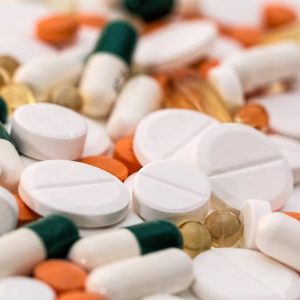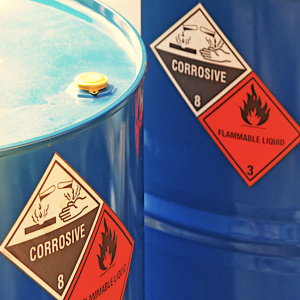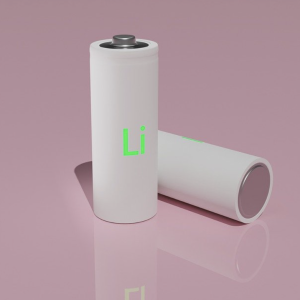Want to experience the greatest in board studying? Check out our interactive question bank podcast- the FIRST of its kind here: emrapidbombs.supercast.com
Author: Christopher Musselwhite, MD
Peer Reviewer: Blake Briggs, MD
Objectives: At the conclusion of this document, the learner will be able to identify what entails alcohol withdrawal, explain complications of alcoholism, diagnose and assess patients withdrawing from alcohol, and treat alcohol withdrawal with correct medications.
Introduction
Alcohol has been around since time immemorial (like, a long time), but with alcohol consumption comes alcohol complications. In America, ~15% of Americans will have alcohol abuse disorder in their lifetime, and nearly half of these patients will experience some withdrawal symptoms upon drinking cessation. Nearly 20% have severe symptoms including hallucinations, seizures, and the infamous delirium tremens.1
Pathophysiology
Key neuroreceptors involved in alcohol toxicity, withdrawal, and treatment of withdrawal are GABA and NMDA receptors.
GABA neuroreceptors are inhibitory. NMDA neuroreceptors have the opposite effect and are excitatory in nature. Alcohol works by binding to both GABA and NMDA neuroreceptors, potentiating GABA while inhibiting the NMDA receptors creating CNS depression.2
In chronic alcoholism, the neurons, which don’t like to be depressed (who can blame them?), will downregulate GABA receptors while upregulating NMDA receptors, meaning that those dependent on alcohol will have less overall CNS depression with a given level of alcohol (tolerance).2 If a patient suffering from alcoholism suddenly stops or reduces the amount of alcohol, they intake, there will be a concomitant increase in CNS stimulation as the NMDA receptors suddenly lose their inhibition and GABA receptors lose their potentiation leading to the symptoms of alcohol withdrawal.2
Accelerate your learning with our EM Question Bank Podcast
- Rapid learning
- Interactive questions and answers
- new episodes every week
- Become a valuable supporter
Symptom Timeline
Mild Symptoms: 6 to 36 hours from the last drink.
Consists of anxiety, tremors, headache, nausea, and sleep disturbances.3, 4
The tremors are classically hand or body tremors, including tongue fasciculations which cannot be faked if ever you have doubt.
Seizures: 6 to 48 hours after the last drink.
Rarely do seizures occur after 48 hours; typically generalized tonic-clonic in nature.
Moderate Symptoms: 12 to 48 hours from the last drink.
Alcoholic hallucinosis including visual, auditory, and tactile hallucinations, that can be very frightening (remember the heffalumps and woozles song from Winnie the Pooh). These hallucinations can persist for six days!
Severe Symptoms: 48 to 96 hours from the last drink.
Delirium tremens (DTs) including extreme agitation and altered sensorium.
The hallmark is extreme sympathomimetic symptoms including hypertension, diaphoresis, tachycardia, and hyperthermia.
Historically, up to 30% of patients would die from DTs, but now with modern medical therapy, this rate has fallen to 1-4%. Mortality is related to sympathomimetic complications, respiratory failure secondary to aspiration, and electrolyte abnormalities.
Workup Considerations
Alcoholics, like diabetics, have multisystem pathology and unfortunately very often suffer from poor disease insight. Always look for other acute medical problems that could confound the picture of withdrawal.
““God put alcoholics on this earth to humble physicians.””
Alcoholics, like diabetics, have multisystem pathology and additionally are often very unreliable historians with poor disease insight. Always look for other acute medical problems that could confound the picture of withdrawal. Our great mnemonic can help: Remember, “POUR ME A GLASS”
Pancreatitis
Oral cancers (mouth, neck, esophageal)
Ulcers
Rhythm disorders (A. fib)
Metabolic changes: hyponatremia, hypomagnesemia, hypoglycemia
Encephalopathy (Wernicke, Korsakoff)
Anemia
GI bleed
Liver cirrhosis
Aspiration
Suicide
Sepsis
What sort of labs you order should largely be dictated by clinical picture and physician gestalt? CBC, CMP, lipase, serum ethanol level, and EKG would likely be justified in most cases. This won’t diagnose alcohol withdrawal but will diagnose other complications of alcohol abuse.
If a patient has an elevated serum ethanol level, never assume the pt cant be in alcohol withdrawal. Those who heavily drink and those who drink nearly every day can start withdrawing at non-zero ethanol levels.5
If the patient is altered, obvious trauma on exam, or there is a “sketchy” history of a fall, perform a head CT +/- C-spine depending on their alertness.
Assessing level of withdrawal / response to treatment
The best predictor of a significant withdrawal is the PAWSS (Prediction of Alcohol Withdrawal Severity Score). >4.
There are many severity scoring systems for severity of withdrawal, but the most studied and most used is CIWA. CIWA does NOT predict withdrawal (that’s PAWSS), but it determines withdrawal severity and can be used to guide therapy.6, 7
If using the score:
0-9 is very mild withdrawal, usually does not warrant treatment in the ED
10-15 is mild withdrawal.
16-20 is moderate withdrawal
21-67 is severe withdrawal, usually requiring ICU admission
The difficulty of using CIWA lies in its length, complexity, and subjectiveness. The score consists of ten items, each with multiple subjective selections. For instance, under auditory disturbances, what’s the difference between, “moderate harshness or ability to frighten,” “moderately severe hallucinations,” “severe hallucinations,” and “extremely severe hallucinations”? The variability between providers and nursing staff and the difficulty of using the scale can make guiding therapy challenging.8
An alternative approach would be to use the Richmond Agitation-Sedation Scale. The scale is commonly used to guide sedation for intubated patients, making it fairly familiar to use for nursing staff and providers.9 The scale is also quicker to use, simplifying assessment of therapy response and guiding additional treatment.
Managing withdrawal symptoms
Supportive care is a must including intravenous fluids, nutrition and avoiding stimulation (can be difficult depending on your operating environment).
Our usual “go to” nutrition supplement in alcoholic dependent patients is thiamine and folate (a good ole banana bag, not named after a “Dr. Banana,” but because the fluids appear yellow). Alcoholic patients can also have a concomitant hypoglycemia, and there is a theoretical (and board testable!) risk of worsening Wernicke encephalopathy if glucose is given prior to thiamine.10 This risk is likely untrue in real life, and honestly is likely being phased out of board exams. However, still be familiar with it. When giving glucose, intravenous is expensive. Unless the patient demonstrates inability to tolerate oral medications or is clearly in Wernicke encephalopathy, oral glucose (grab a snickers!) is preferred and its effects last longer.
The heart of the management of alcohol withdrawal is activating their GABA receptors and suppressing their NMDA receptors, most commonly with benzodiazepines, although there is increasing evidence for phenobarbital monotherapy. Antipsychotics should NEVER be used as they lower the seizure threshold, prolong the Qtc, and do not address GABA receptor depletion.11
Benzodiazepines
The most commonly used benzodiazepines used in acute withdrawal are lorazepam and diazepam.12 There has not been any studies showing any benzodiazepine superior in the treatment of alcohol withdrawal.13 Diazepam does have a faster onset, taking one to five minutes to take effect, while lorazepam is slightly slower at five to twenty minutes; however, diazepam has active metabolites that are metabolized by the liver. In liver failure, these metabolites can remain in circulation, increasing sedation by almost five times.
Whichever choice of benzodiazepine you decide to use, the key to management is regular and frequent revaluation of the patient. You may need to escalate the dose, titrating to a goal RASS of -1 or CIWA <8, and heart rate <120.
- Diazepam every 5-10 minutes starting with 10mg IV, increasing by 10mg every other recheck (ie, 10-10-20-20-30-30-40-40)
- Lorazepam every 20-30 minutes starting with 2mg IV, increasing by 2mg every other recheck (ie, 2-2-4-4-6-6-8-8)
Refractory Alcohol Withdrawal
There is no clear definition of refractory alcohol withdrawal, but some suggest no response to lorazepam more than 10mg in one hour or diazepam more than 200mg in 3 hours.14,15
Phenobarbital is a drug gaining notoriety and popularity in the FOAMed/Pulmcrit world. When used as a rescue agent in conjunction with benzodiazepines, patients have had lower rates of ICU admission, as well as decreased ICU stays.16,17 There are many potential reasons why phenobarbital can be effective in alcohol withdrawal.
Benzodiazepines increase frequency of GABA channel opening, while barbiturates increase the duration of opening, making them act synergistically. Also, phenobarbital not only acts on the GABA receptor, but can also inhibit some of the other excitatory neuroreceptors.18 Additionally, treatment with large amounts of benzodiazepines can cause a paradoxical delirium which is not as common a reaction with barbiturates.19
While evidence mounts regarding phenobarbital’s efficacy in alcohol withdrawal, widespread use of the drug has been slow to be adopted. Perhaps people are just more comfortable giving benzodiazepines than barbiturates. There have been long term worries regarding respiratory depression and need for intubation. However, studies have found patients treated with phenobarbital were less likely to require intubation.20
Most resources we’ve seen recommend phenobarbital in refractory withdrawal, but others are more aggressive with it and if they see clear-obvious signs of withdrawal phenobarbital might be started earlier. This is where clinical preference plays a large role… and it’s at this intersection our review stops.
Most of the more successful studies using phenobarbital as monotherapy started with a loading dose of 10 mg/kg over 1 hour, but some other sources recommend using 130mg every 15 minutes, again titrating appropriate RASS/CIWA and vital improvement.21
Another alternative is ketamine, which can augment your benzodiazepines as ketamine is an NMDA antagonist. Lastly, propofol can also be used in the refractory alcohol withdrawal.12
Whichever agent you reach for next, you will likely need to intubate them at this point given the levels of sedative medications the patient is receiving, and that decision point may depend on the patient’s medical comorbidities as well as their ability to protect their airway.
Disposition
Many patients in alcohol withdrawal require ICU admission. There is no set criteria on ICU admission, however clinical gestalt is paramount. One must consider their initial presentation, their medical comorbidities, their response to therapy, if they have been refractory to treatment. We prefer ICU for all alcohol withdrawal patients, as they can frequently be reassessed and the potential for “sneaky” decline on the floor is too great a risk.
References:
1. Maldonado JR, Sher Y, Ashouri JF, Hills-Evans K, Swendsen H, Lolak S, Miller AC. The “Prediction of Alcohol Withdrawal Severity Scale” (PAWSS): systematic literature review and pilot study of a new scale for the prediction of complicated alcohol withdrawal syndrome. Alcohol. 2014 Jun;48(4):375-90. doi: 10.1016/j.alcohol.2014.01.004. Epub 2014 Feb 19. PMID: 24657098.
2. Hughes JR. Alcohol withdrawal seizures. Epilepsy Behav. 2009 Jun;15(2):92-7. doi: 10.1016/j.yebeh.2009.02.037. Epub 2009 Feb 26. PMID: 19249388.
3. Farrokh S, Roels C, Owusu KA, Nelson SE, Cook AM. Alcohol Withdrawal Syndrome in Neurocritical Care Unit: Assessment and Treatment Challenges. Neurocrit Care. 2020 Aug 13. doi: 10.1007/s12028-020-01061-8. Epub ahead of print. PMID: 32794143.
4. Turner RC, Lichstein PR, Peden JG Jr, Busher JT, Waivers LE. Alcohol withdrawal syndromes: a review of pathophysiology, clinical presentation, and treatment. J Gen Intern Med. 1989 Sep-Oct;4(5):432-44. doi: 10.1007/BF02599697. PMID: 2677272.\
5. Roffman JL, Stern TA. Alcohol withdrawal in the setting of elevated blood alcohol levels. Prim Care Companion J Clin Psychiatry. 2006;8(3):170-3. doi: 10.4088/pcc.v08n0307. PMID: 16912820; PMCID: PMC1540391.
6. Saitz R, Mayo-Smith MF, Roberts MS, et al. Individualized treatment for alcohol withdrawal. A randomized double-blind controlled trial. JAMA 1994; 272:519.
7. Jaeger TM, Lohr RH, Pankratz VS. Symptom-triggered therapy for alcohol withdrawal syndrome in medical inpatients. Mayo Clin Proc 2001; 76:695.
8. Eloma AS, Tucciarone JM, Hayes EM, Bronson BD. Evaluation of the appropriate use of a CIWA-Ar alcohol withdrawal protocol in the general hospital setting. Am J Drug Alcohol Abuse. 2018;44(4):418-425. doi: 10.1080/00952990.2017.1362418. Epub 2017 Oct 5. PMID: 28981333.
9. Sessler CN, Gosnell MS, Grap MJ, Brophy GM, O’Neal PV, Keane KA, Tesoro EP, Elswick RK. The Richmond Agitation-Sedation Scale: validity and reliability in adult intensive care unit patients. Am J Respir Crit Care Med. 2002 Nov 15;166(10):1338-44. doi: 10.1164/rccm.2107138. PMID: 12421743.
10. Galvin R, Bråthen G, Ivashynka A, et al. EFNS guidelines for diagnosis, therapy and prevention of Wernicke encephalopathy. Eur J Neurol 2010; 17:1408.
11. Wong A, Benedict NJ, Kane-Gill SL. Multicenter evaluation of pharmacologic management and outcomes associated with severe resistant alcohol withdrawal. J Crit Care. 2015 Apr;30(2):405-9. doi: 10.1016/j.jcrc.2014.10.008. Epub 2014 Oct 16. PMID: 25433725.
12. Long D, Long B, Koyfman A. The emergency medicine management of severe alcohol withdrawal. Am J Emerg Med. 2017 Jul;35(7):1005-1011. doi: 10.1016/j.ajem.2017.02.002. Epub 2017 Feb 4. PMID: 28188055.
13. Perry EC. Inpatient management of acute alcohol withdrawal syndrome. CNS Drugs. 2014 May;28(5):401-10. doi: 10.1007/s40263-014-0163-5. PMID: 24781751.
14. Mo Y, Thomas MC, Karras GE Jr. Barbiturates for the treatment of alcohol withdrawal syndrome: A systematic review of clinical trials. J Crit Care. 2016 Apr;32:101-7. doi: 10.1016/j.jcrc.2015.11.022. Epub 2015 Dec 8. PMID: 26795441.
15. Langlois H, Cormier M, Villeneuve E, Hoffman RS, Longo C, Gosselin S. Benzodiazepine resistant alcohol withdrawal: What is the clinician’s preferred definition? CJEM. 2020 Mar;22(2):165-169. doi: 10.1017/cem.2019.421. PMID: 31645232.
16. Nisavic M, Nejad SH, Isenberg BM, Bajwa EK, Currier P, Wallace PM, Velmahos G, Wilens T. Use of Phenobarbital in Alcohol Withdrawal Management – A Retrospective Comparison Study of Phenobarbital and Benzodiazepines for Acute Alcohol Withdrawal Management in General Medical Patients. Psychosomatics. 2019 Sep-Oct;60(5):458-467. doi: 10.1016/j.psym.2019.02.002. Epub 2019 Feb 14. PMID: 30876654.
17. Tidwell WP, Thomas TL, Pouliot JD, Canonico AE, Webber AJ. Treatment of Alcohol Withdrawal Syndrome: Phenobarbital vs CIWA-Ar Protocol. Am J Crit Care. 2018 Nov;27(6):454-460. doi: 10.4037/ajcc2018745. PMID: 30385536.
18. Ammar MA, Ammar AA, Rosen J, Kassab HS, Becher RD. Phenobarbital Monotherapy for the Management of Alcohol Withdrawal Syndrome in Surgical-Trauma Patients. Ann Pharmacother. 2021 Mar;55(3):294-302. doi: 10.1177/1060028020949137. Epub 2020 Aug 22. PMID: 32830517.
19. Moore PW, Donovan JW, Burkhart KK, Waskin JA, Hieger MA, Adkins AR, Wert Y, Haggerty DA, Rasimas JJ. Safety and efficacy of flumazenil for reversal of iatrogenic benzodiazepine-associated delirium toxicity during treatment of alcohol withdrawal, a retrospective review at one center. J Med Toxicol. 2014 Jun;10(2):126-32. doi: 10.1007/s13181-014-0391-6. PMID: 24619543; PMCID: PMC4057541.
20. Sullivan SM, Dewey BN, Jarrell DH, Vadiei N, Patanwala AE. Comparison of phenobarbital-adjunct versus benzodiazepine-only approach for alcohol withdrawal syndrome in the ED. Am J Emerg Med. 2019 Jul;37(7):1313-1316. doi: 10.1016/j.ajem.2018.10.007. Epub 2018 Oct 11. PMID: 30414743.
21. Schmidt KJ, Doshi MR, Holzhausen JM, Natavio A, Cadiz M, Winegardner JE. Treatment of Severe Alcohol Withdrawal. Ann Pharmacother. 2016 May;50(5):389-401. doi: 10.1177/1060028016629161. Epub 2016 Feb 9. PMID: 26861990.
22. Kosten TR, O’Connor PG. Management of drug and alcohol withdrawal. N Engl J Med 2003; 348:1786.
23. Wood E, Albarqouni L, Tkachuk S, et al. Will This Hospitalized Patient Develop Severe Alcohol Withdrawal Syndrome?: The Rational Clinical Examination Systematic Review. JAMA 2018; 320:825.
24. Morrow AL, Suzdak PD, Karanian JW, Paul SM. Chronic ethanol administration alters gamma-aminobutyric acid, pentobarbital and ethanol-mediated 36Cl- uptake in cerebral cortical synaptoneurosomes. J Pharmacol Exp Ther 1988; 246:158.
25. Etherington JM. Emergency management of acute alcohol problems. Part 1: Uncomplicated withdrawal. Can Fam Physician 1996; 42:2186.
26. Victor M, Brausch C. The role of abstinence in the genesis of alcoholic epilepsy. Epilepsia 1967; 8:1.
27. VICTOR M, ADAMS RD. The effect of alcohol on the nervous system. Res Publ Assoc Res Nerv Ment Dis 1953; 32:526.
28. Saitz R, O’Malley SS. Pharmacotherapies for alcohol abuse. Withdrawal and treatment. Med Clin North Am 1997; 81:881.
29. Mayo-Smith MF, Beecher LH, Fischer TL, et al. Management of alcohol withdrawal delirium. An evidence-based practice guideline. Arch Intern Med 2004; 164:1405.
30. Daeppen JB, Gache P, Landry U, et al. Symptom-triggered vs fixed-schedule doses of benzodiazepine for alcohol withdrawal: a randomized treatment trial. Arch Intern Med 2002; 162:1117.
31. Cassidy EM, O’Sullivan I, Bradshaw P, et al. Symptom-triggered benzodiazepine therapy for alcohol withdrawal syndrome in the emergency department: a comparison with the standard fixed dose benzodiazepine regimen. Emerg Med J 2012; 29:802.
32. Sullivan JT, Sykora K, Schneiderman J, et al. Assessment of alcohol withdrawal: the revised clinical institute withdrawal assessment for alcohol scale (CIWA-Ar). Br J Addict 1989; 84:1353.
33. Cagetti E, Liang J, Spigelman I, Olsen RW. Withdrawal from chronic intermittent ethanol treatment changes subunit composition, reduces synaptic function, and decreases behavioral responses to positive allosteric modulators of GABAA receptors. Mol Pharmacol 2003; 63:53.
34. Nolop KB, Natow A. Unprecedented sedative requirements during delirium tremens. Crit Care Med 1985; 13:246.
35. Hack JB, Hoffmann RS, Nelson LS. Resistant alcohol withdrawal: does an unexpectedly large sedative requirement identify these patients early? J Med Toxicol 2006; 2:55.
36. Rosenson J, Clements C, Simon B, et al. Phenobarbital for acute alcohol withdrawal: a prospective randomized double-blind placebo-controlled study. J Emerg Med 2013; 44:592.
37. McCowan C, Marik P. Refractory delirium tremens treated with propofol: a case series. Crit Care Med 2000; 28:1781.
38. Brotherton AL, Hamilton EP, Kloss HG, Hammond DA. Propofol for Treatment of Refractory Alcohol Withdrawal Syndrome: A Review of the Literature. Pharmacotherapy 2016; 36:433



